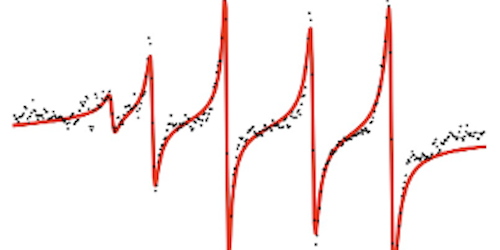Charting Flatland Materials
Light-based instruments that probe electronic quasiparticles in few-atom-thick material sheets are limited to sheets at least as large as the wavelength of light, which are not always possible to fabricate. Existing alternatives replace the light probe with an electron beam. However, this introduces changes in the material’s electron momentum, unlike light-based tests. Now Alberto Guandalini of Sapienza University of Rome, Thomas Pichler of the University of Vienna, and their collaborators have improved the energy and momentum resolution of an electron-beam-based technique and measured the plasmon energies of graphene—collective electronic oscillations in a one-atom-thick sheet of carbon atoms—at the smallest electron momentum change reported yet [1].
The technique entails directing a beam of electrons at graphene and analyzing the energy and momentum of the scattered electrons that pass through. Building on previous theories, the team identified that the measurement outcome has two contributions. One accounts for the intrinsic properties of graphene. The other, called kinematic, arises solely from momentum and energy-conservation rules. By deriving a formula for the kinematic contribution, the team isolated graphene’s intrinsic response.
To achieve a low-momentum measurement, the researchers introduced a pinhole aperture to let through only scattered electrons that experienced low momentum changes. They obtained graphene’s plasmon spectrum by repeatedly changing the energy of the incoming electron beam and accounting for kinematic effects. The high-resolution spectrum revealed that kinematic contributions dominate the signal, contrary to previous reports. The team says the improved technique can probe other few-atom-thick materials and ultrathin films at the nanoscale, and eventually it could be used to study operating devices.
–Martin Rodriguez-Vega
Martin Rodriguez-Vega is an Associate Editor for Physical Review Letters.
References
- A. Guandalini et al., “Direct observation of the vanishing electron energy loss spectroscopy cross section in graphene,” Phys. Rev. B 111, L041401 (2025).




